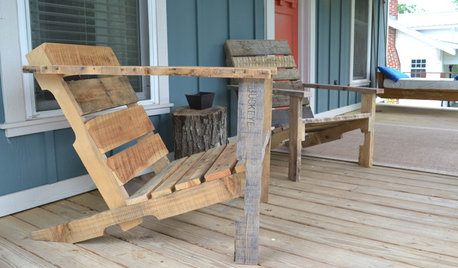New to raising EF's
dadugriff
11 years ago
Related Stories

HOUZZ TOURSMy Houzz: Austin Family Breathes New Life Into an Old Bungalow
Homeowners brighten up their 1948 fixer-upper with new floors, marble countertops and so much more
Full Story
TRADITIONAL HOMESMy Houzz: Step Inside a Grand 1800s Victorian
A 7,000-square-foot historic estate returns to glory, thanks to loving renovations by a tireless Texas couple
Full Story
BEDROOMS11 Reasons to Love White Bedding
For easy bedding that makes neutrals sing and accessories pop, look to the white side
Full Story
DECORATING GUIDESRoom of the Day: A Fresh Mix in a Traditional Colonial
A designer combines rich colors and fabrics with lighter pieces in a living room that's the heart of a North Carolina home
Full Story
MOST POPULARHouzz Tour: Gracious Older Home Updated for a Young Family
A Texas designer lightens up and repurposes rooms, creating a welcoming space that suits this family’s casual lifestyle
Full Story
WOODWORKINGBuild Your Own Wooden Deck Chair From a Pallet — for $10!
Take the ecofriendly high road with a low-cost outdoor chair you make yourself
Full Story
BASEMENTSDesign Workshop: Is It Time to Let Basements Become Extinct?
Costly and often unnecessary, basements may become obsolete — if they aren’t already. Here are responses to every reason to keep them around
Full Story
ARCHITECTUREDesign Workshop: How to Make a Home Sit Lightly on the Land
Piers, cantilevers, towers and more can help minimize a home’s environmental impact on its site
Full Story
EVENTSOn Show: Weird, Wondrous Science Meets Design
Houses grown, not built. Power-generating soil. And snail poop that ... well, see for yourself in our coverage of a new Rotterdam exhibit
Full Story
REMODELING GUIDESContractor Tips: Advice for Laundry Room Design
Thinking ahead when installing or moving a washer and dryer can prevent frustration and damage down the road
Full StoryMore Discussions






Aindra
mendopete
Related Professionals
Clemson Landscape Architects & Landscape Designers · Foothill Ranch Landscape Architects & Landscape Designers · Lowell Landscape Architects & Landscape Designers · Byram Landscape Contractors · Glendale Heights Landscape Contractors · Midland Landscape Contractors · St. Louis Landscape Contractors · Wallingford Landscape Contractors · West Chicago Landscape Contractors · Arkansas City General Contractors · Jackson General Contractors · Mililani Town General Contractors · Montclair General Contractors · Norfolk General Contractors · Seal Beach General Contractorsequinoxequinox
dadugriffOriginal Author
dadugriffOriginal Author
dadugriffOriginal Author
dadugriffOriginal Author
dadugriffOriginal Author
mendopete
tulips101